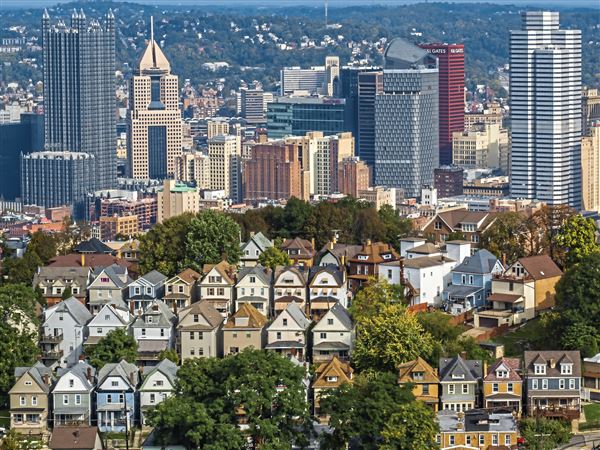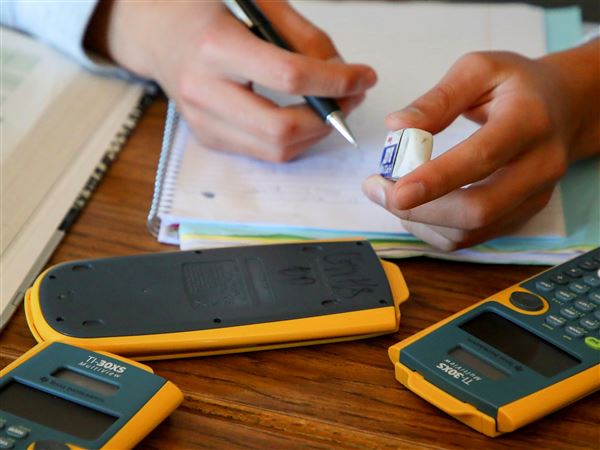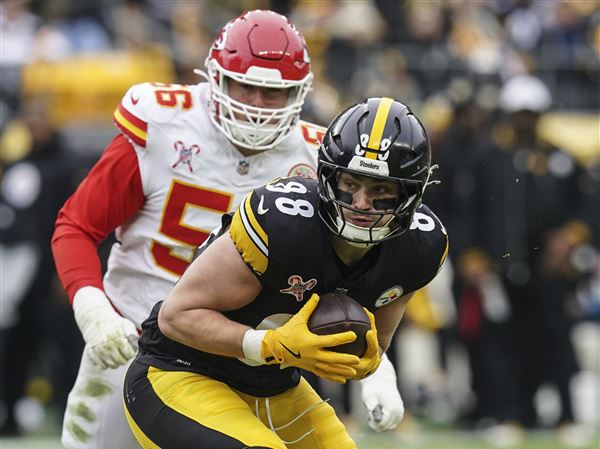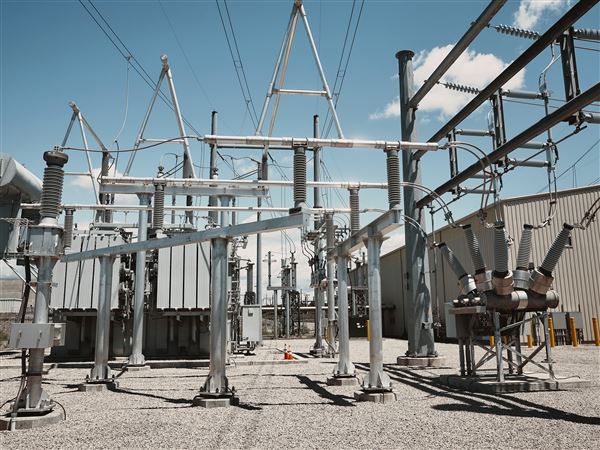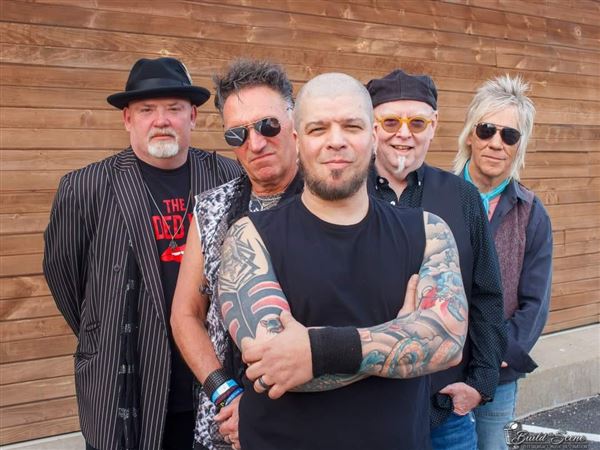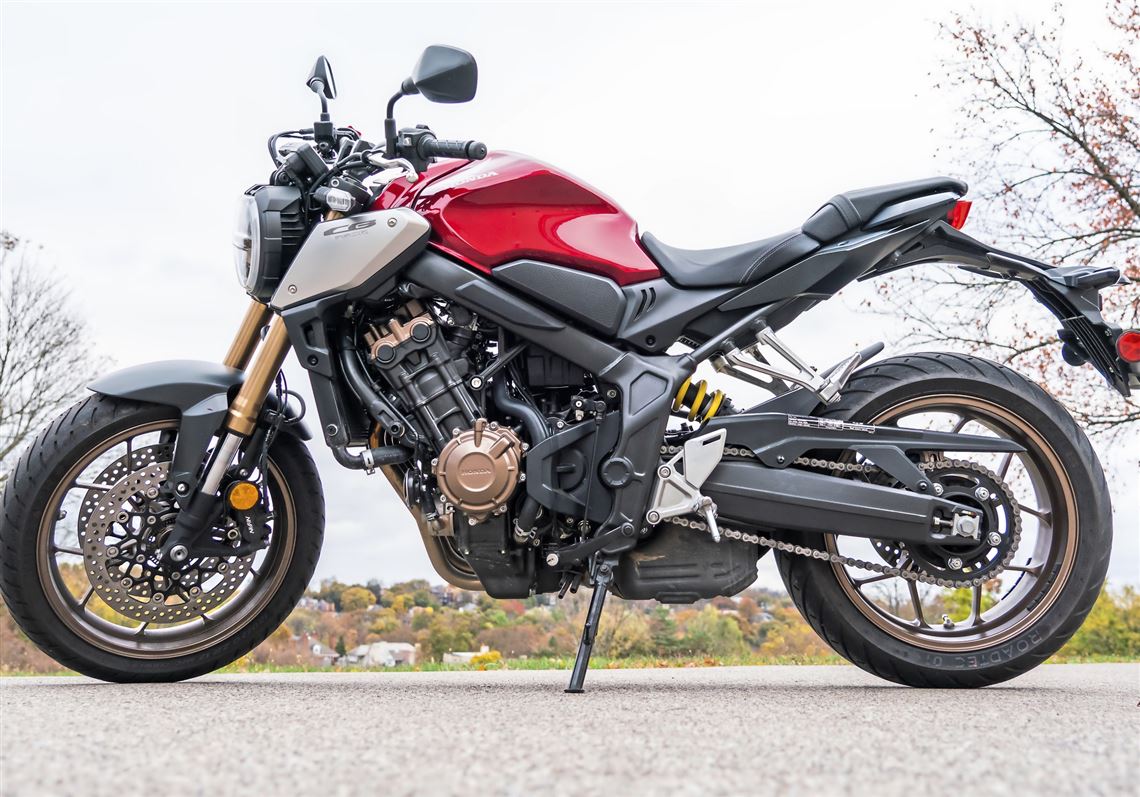______________
Isolation? Check. Face mask? Check. Distance between yourself and others? Check. COVID-19 preparation? Guess again.
When it comes to motorcycling, there’s no need for coronavirus concerns. And with Honda’s CB650R at our disposal, very little time was spent indoors, as the Honda checks all the right boxes in putting space between yourself and others.
American Honda, based in Torrance, California, was kind of enough to lend the Pittsburgh Post-Gazette a 2019 model (don’t expect many changes from the 2020 version) and we used that time exploring Pittsburgh’s rugged streets and beyond.
The CB650R is Honda’s middleweight offering for a style of bike the manufacturer calls a “neo sports-cafe.” It’s a name that hearkens back to the days of street racers buzzing from cafe to cafe in the English countryside, but unlike many of bikes from the 1950s and ’60s, the CB is a modern example of refinement. As a daily commuter, it was even, dare we say, gentlemanly.
The bike is powered by a 649cc, liquid-cooled, inline-four cylinder engine whose power was predictable — in the best possible way — and manageable. New riders will appreciate that most, as it inspires confidence. Experienced riders will find the engine so compliant, they’ll be tempted to tap into their inner daredevil.
When upping the pace, life best exists between 6,200 rpm and a redline that stops just short of 13,000. The biggest smiles are found in third and fourth gear, where the gearing and estimated 85 horsepower are best exploited. However, the bike’s power delivery seems smoothest in the mid-range and the 6-speed gearbox is ratioed accordingly.
For riders who insist on having more power, the 650’s bigger brother, the CB1000R, might be a better option. But the 650, whether it’s commuting to work or touring on the highway, is more than capable and in no way underwhelming.
Once off the throttle, the CB is slowed at the front wheel by two radially mounted, four-piston Nissin brake calipers, whose function was smooth — no bites or grabbiness. A stock slipper clutch meant less engine braking, but downshifts were seamless. No wheel-hop when braking aggressively for stops at the local 7-Eleven.
Of course, the overall package is only enhanced by handling that Honda’s engineers nailed. Even with a bigger rider like myself, the 450-pound CB requires only the lightest steering inputs to lean into turns and goes exactly where you want it to go.
Smiles were abundant while blasting up Sycamore Street to Mount Washington, dodging joggers along Stone Manse Drive — a short, isolated but favored stretch in South Park — and scooting around Riverview Park and Observatory Hill.
The bike’s all-around abilities shone on a ride to Tionesta, Pennsylvania, and the Allegheny National Forest, a chilly trip that included highway miles and back-country twisties. On that particular journey, a gas tank slightly larger than the standard 4.1-gallon unit would’ve been welcomed, but I never had an issue getting to the next stop.
Ergonomically, the bike was generally comfortable, with a seat that is plush compared to the other Japanese bikes in its class. The reach to the grips puts the rider in a sporty position — sportier than Yamaha’s FZ lineup, less aggressive than Kawasaki’s Z models and more in tune with Suzuki’s GSX-S line. The seat height is 31.9 inches, and women and riders under 5-foot-5 will appreciate how narrow the seat is at the tank. That waspiness allows for better reach to the ground.
Since Honda is trying to keep the CB650R affordable (MSRP is $9,000) for younger riders, that means the bike comes with little frills when it comes to electronic rider aids. In other words, there are no engine power modes. Traction control adjustability has two options: on and off. Honda was kind enough to include a toggle button, accessible with the left index finger, to activate the traction control.
The TC kicked in just once — that I’m aware of — during my stint aboard the CB. In third gear on West Liberty Avenue, I rode over a wet tar snake at lean. There was a slight loss in grip followed by a super-quick engine hiccup. I can only assume that hiccup — an electronic cut in power — was the TC kicking in and helped keep my keister from hitting the roadway. Thank you, Honda.
The CB also lacks adjustable front suspension. Optional ABS is available for about $200 more and is standard on the 2020 model. (Ours was ABS-equipped, but was not tested.)
Useful information — including speed, fuel, fuel mileage and warning lights — is relayed to the rider via a cellphone-sized and -shaped LCD display that was easily readable in both harsh sunlight and at night.
Aesthetically, the bike generally avoids a lot of the funky styling points seen on other motorcycles in the standard/naked classification. An instantly noticeable detail is the LCD ring that encircles the headlight. Bronze-colored details can be found on the fork tubes, wheels and engine cases and pair well with the Honda’s “chromosphere” red paint.
However, Honda’s designers seemed to do the CB a disservice by covering the most eye-pleasing part of the bike with the ugliest part: the radiator obscures the headers of four gorgeous exhaust pipes that wrap underneath the motorcycle.
Unless that’s a deal-breaker, consider it a minor flaw in an otherwise wonderful achievement: Honda has built a middleweight bike whose potential can be appreciated by riders of all shapes, sizes and experience levels.
First Published: June 23, 2020, 11:40 a.m.
